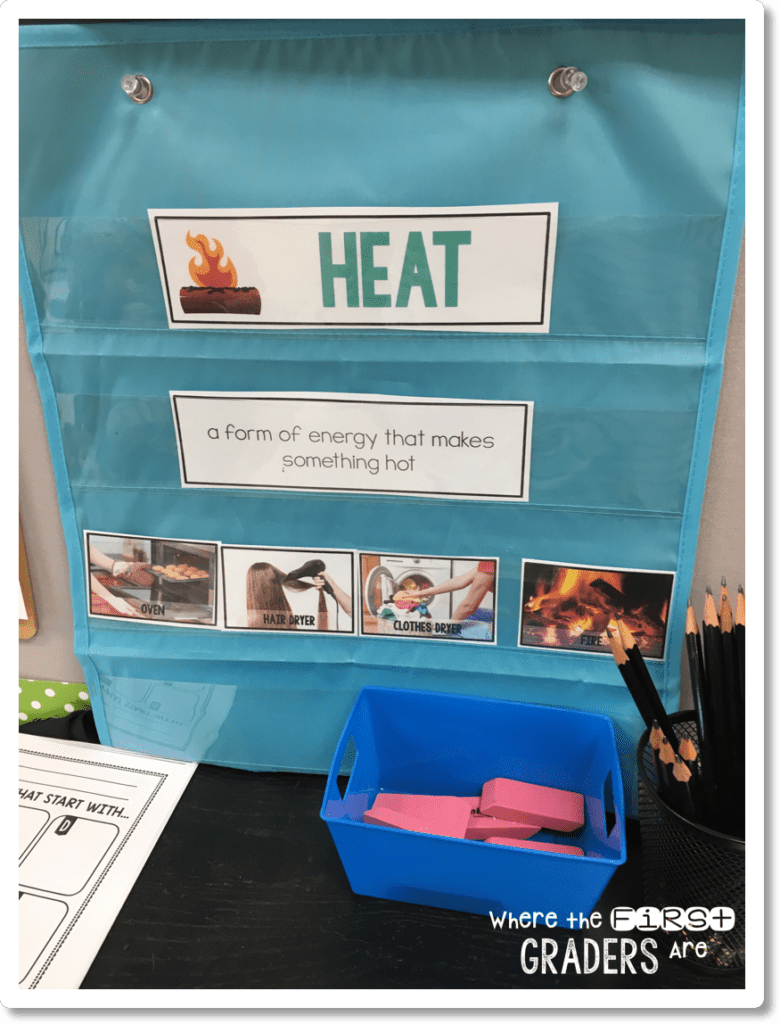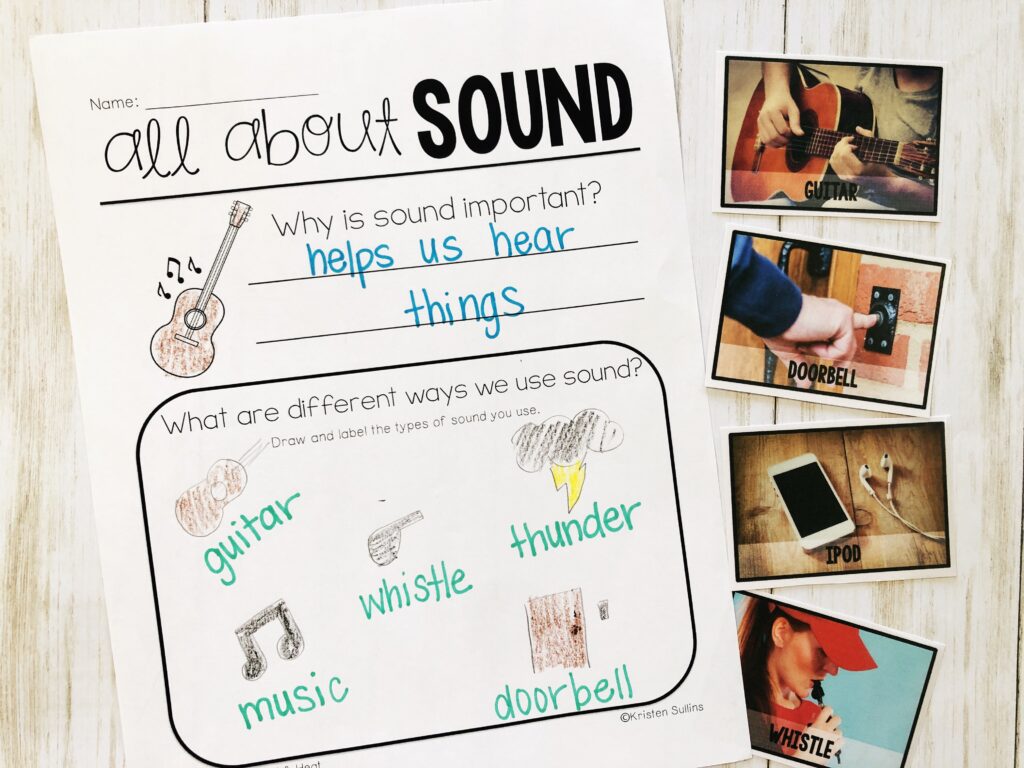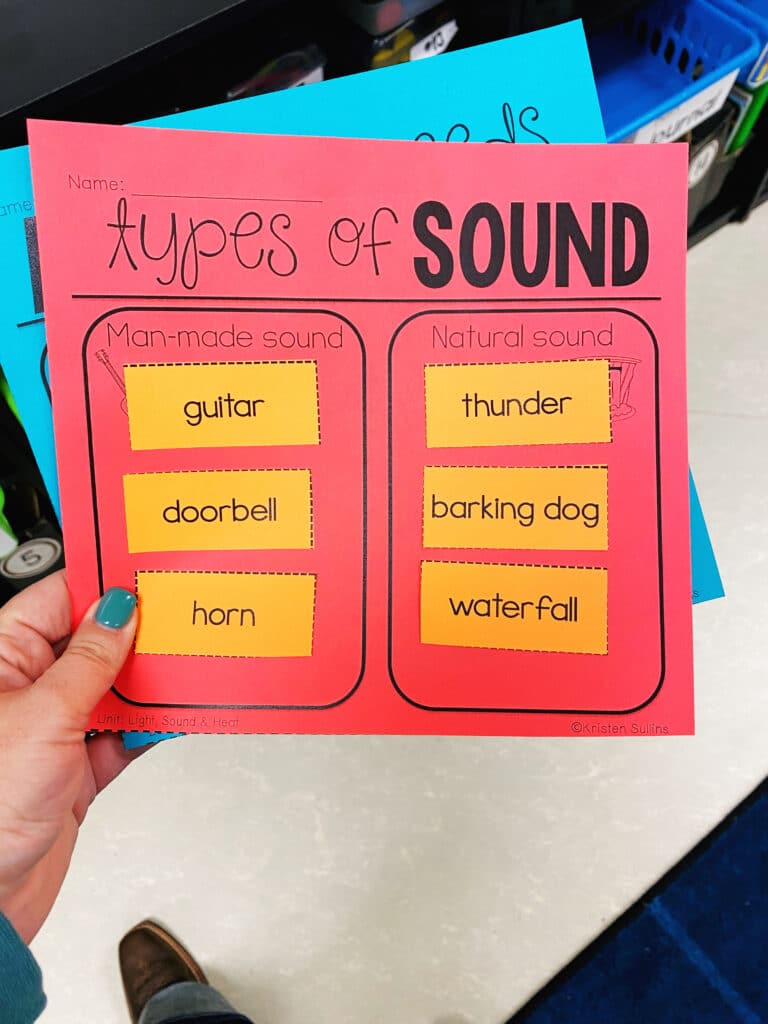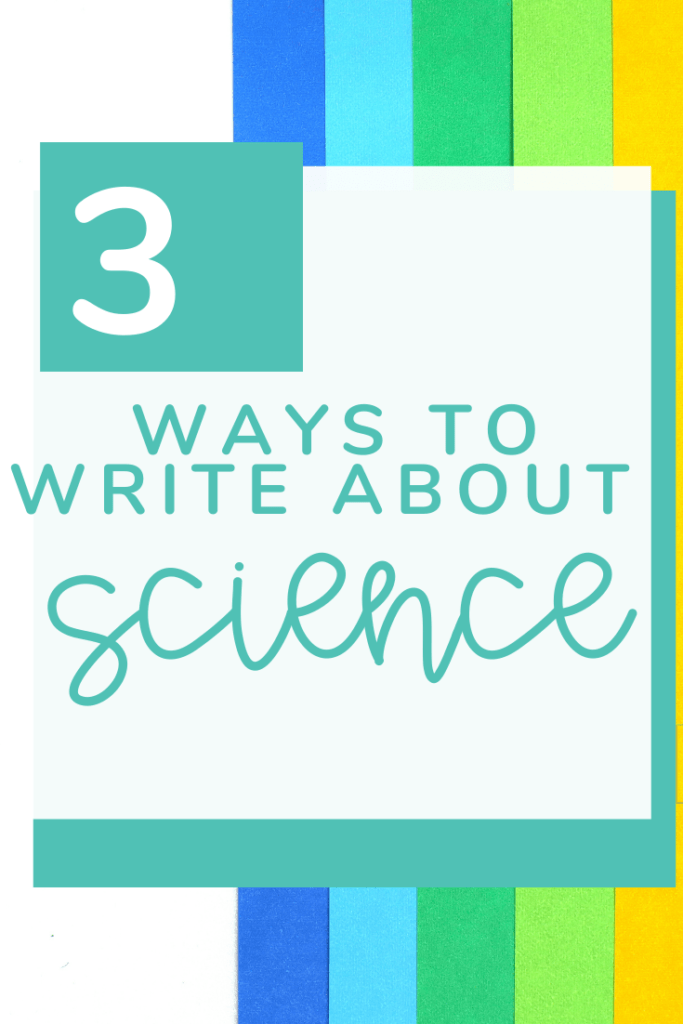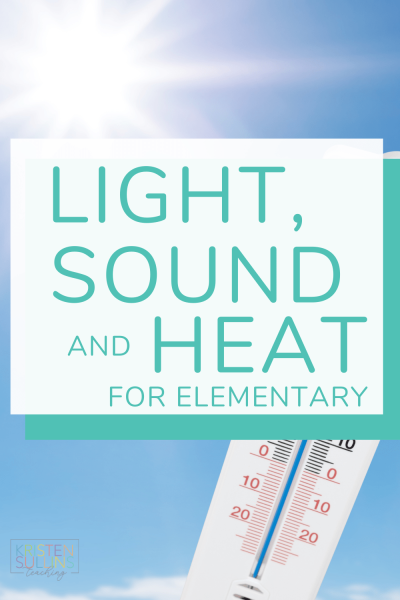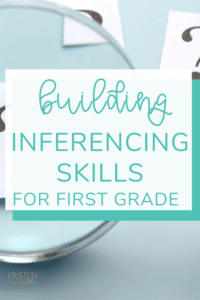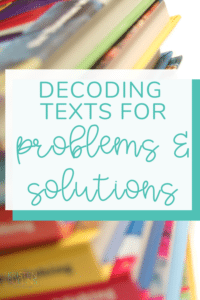If you are looking for quick, no prep activities for First Grade students to learn and write about the three basic types of energy: light, sound and heat then you are in the RIGHT PLACE!
I'm a first grade teachers and let me be honest by saying that planning social studies and science is never top on my priority list!
That was UNTIL I realized there are some hidden gems in the form of golden opportunities when it comes to my science instructions.
Read this post if you want to learn how to build in intervention time and meaningful writing opportunities while teaching your First Grade students about Light, Sound and Heat!

What First Grade Students Should Know About Types of Energy
Types of Energy sounds like it could be a really complicated subject to teach, but in reality, this is a subject that students already know a lot about! It is a subject that they experience in their every day lives!
According to TEKS Resource System (Texas Standards), first grade students should be able to:
“Identify and discuss how different forms of energy such as light, thermal, and sound are important to everyday life.”
Student should know that we need light to see and plants need light to grow.
Examples of Light Energy:
- Sunlight
- Artificial Light
Students should know that sound energy warns us of danger and allows us to communicate.
Examples of Sound Energy:
- Fire Alarm
- Police Siren
- People Talking
Students should know that heat energy keeps us warm, animals need it to survive and we need it to cook our food.
Examples of Heat Energy:
- Sun
- Fire
- Appliances
Learning the Facts about Light Sound and Heat
Okay, “Guided Research” sounds like a super formal term… but what it really means is that these are the activities that we do together as a class and there is typically a right or wrong answer.
This is where I introduce new vocabulary and I am “guiding” students through books or videos to find new information. We are then recording that new information on a simple recording sheet.
These activities are completed at the beginning of the unit when students are just starting to build their knowledge base, so these activities might seem easy, but remember, they are BUILDING their knowledge on the subject.
This unit includes excellent color photograph examples of each of the three types of energy: light, sound and heat that provide great visuals for Elementary students.
I love using open ended prompts like the one you see on the left on the “All About Sound” worksheet.
I love the freedom that it gives me as a teacher to lead the discussion where I need it to go, but I also love that it gives students an opportunity to get really creative.
You can easily differentiate this activity by having students draw, label or even write complete sentences.
Cut and Paste Activities
Next up comes cut and paste activities. These are PERFECT for when students are ready to become a little more independent.
You can still complete these together as a class, OR you can have students complete the activities independent FOR… wait for….
EXTRA INTERVENTION time for math and reading!!
What??
YES! I use my last 30 minutes of the day (for social studies or science) to sneak in a little more intervention time.
I get my students going on an independent activity such as a cut and paste, then I pull back a group of 3-4 students for extra reading or math intervention rather than having them complete the social studies activity… because what's really more important?
Writing about Types of Energy
Incorporating writing into your science is unit is such a TIME SAVER!
And, it allows you to “shoot two birds with one stone”.
If I am running short on class time (which is always), then I tie my science topics and skills into my writing time.
Writing is also a great time to differentiate assignments and meet students where they are at by setting different expectations.
Some students I expect to write 5-6 sentences on a topic, while other students we may practice writing one or two sentences.
Informational Writing
Informational writing is perhaps the most traditional way to write about science. This form of writing has students analyzing and recording facts about a certain topic.
For most students, this is the easiest form of writing because it does not require any creativity. Students are simply taking what they have learned and writing about it.
You can easily differentiate this activity several different ways.
-Easiest: labeling a picture
-Middle: write 1-3 sentences
-Hardest: 4 page booklet
Ex: Research Booklet about an Energy
- page 1- overview of types of energy
- page 2- light
- page 3- sound
- page 4- heat
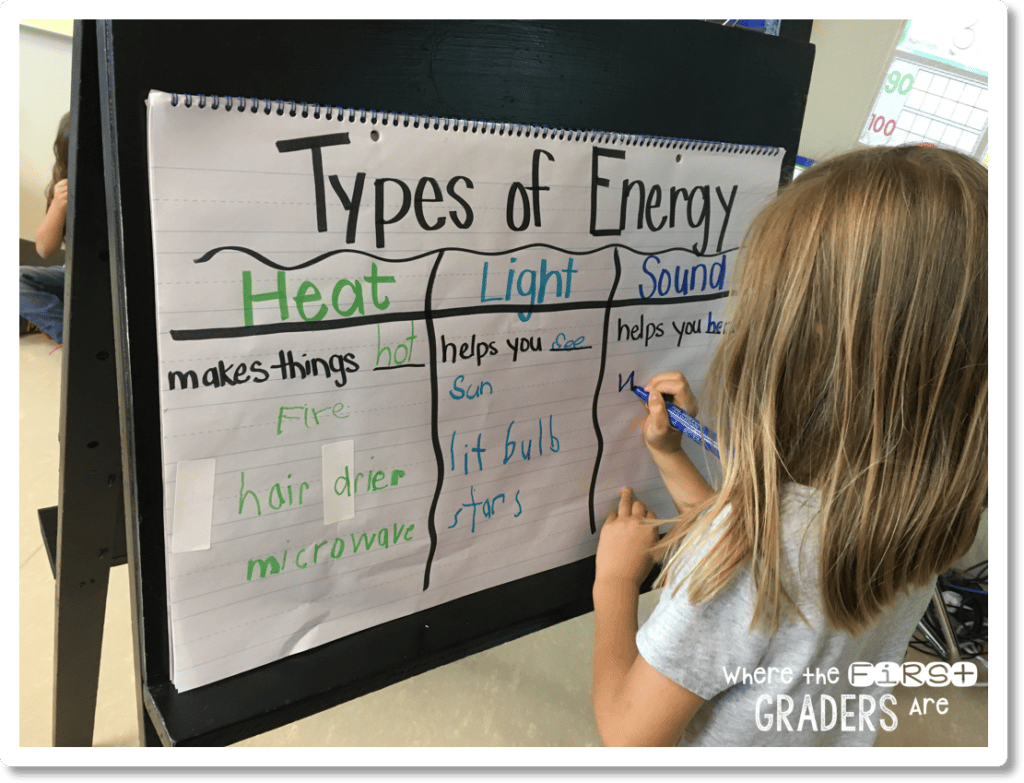
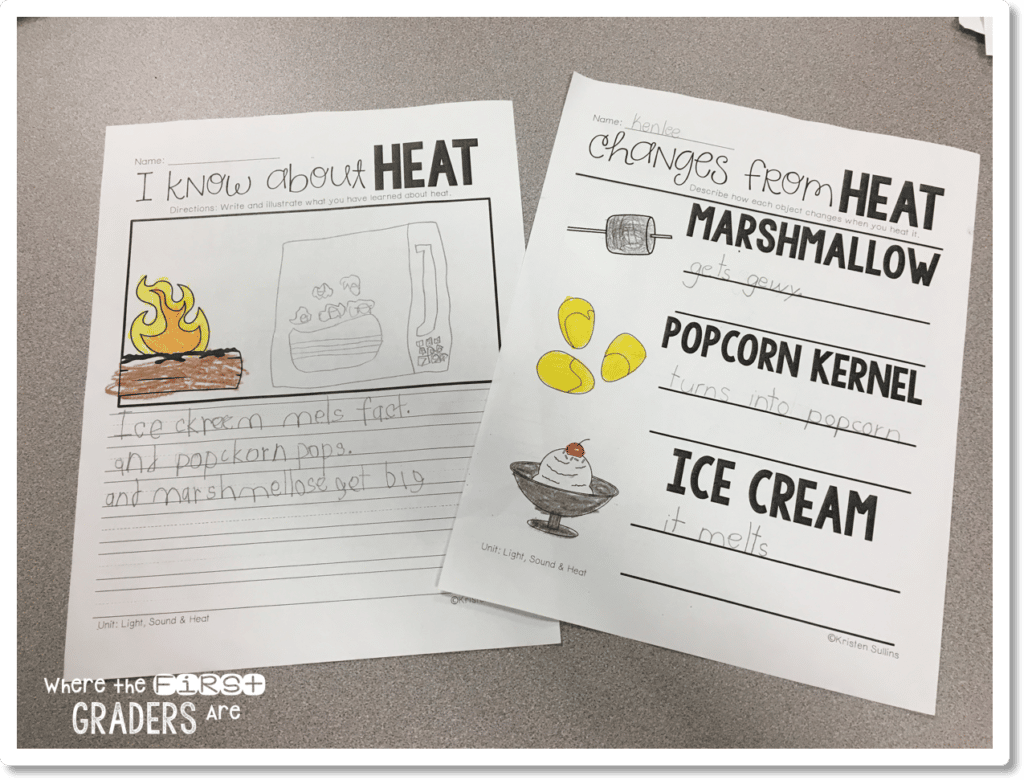
Creative Writing
Creative writing about science provides an opportunity for a little more fun. Students take what they have learned about a subject and use their imagination to write about what their life would be like as a bat, or write what they would do if they discovered a dinosaur fossil.
Creative writing is a two-step process so it is a little more difficult. Students first must process information and identify facts. Then they must take those facts and create a possible scenario given the new information that they learned.
You can still differentiate creative writing in several ways:
-Provide sentence stems: “If I could create my own type of energy, I would create___”
-Complete graphic organizers whole group to help students brainstorm
-If writing a 3-4 page booklet, give students “topics” for each page
- Page 1: present the facts “Did you know… there are 8 planets”
- Page 2: introduce possible scenario “If I were an astronaut, my first stop would be____ because___”
- Page 3-4 continue possible scenario
**Anytime you want to challenge students, make them use “because” in their answer/writing
The Power of Mentor Texts
Sometimes we are REALLY short on time and I “teach” my science standards using mentor texts.
This is a GREAT way to “fit in” science to your schedule because you practice a reading skill, while reading science content.
Here are a few tips about reading science mentor texts:
- Don't read the entire book. Science mentor texts are typically non-fiction and can be pretty lengthy. Don't get overwhelmed and feel like you need to read the entire book. Focus on a few pages that are really going to hit the science content that you need.
- Plan Ahead. If you know what skills you need to cover, keep a stack of science related books near the front of you room. Next time you have a random 5 minutes before a transition, grab a book and read to the class!
- Substitutes. I don't know about you, but I always OVERPLAN activities for my substitutes because I don't want any down time. I love leaving Science books and lessons for my substitutes to complete because I know they will likely have more time to complete them than I will! (Also, the concepts of science are easier to teach than author's purpose, etc.)
Types of Energy Activities for First Grade
All activities in this blog post can be found in my No Prep Light, Sound and Heat unit.
You can purchase it for a week of activities for $4.

